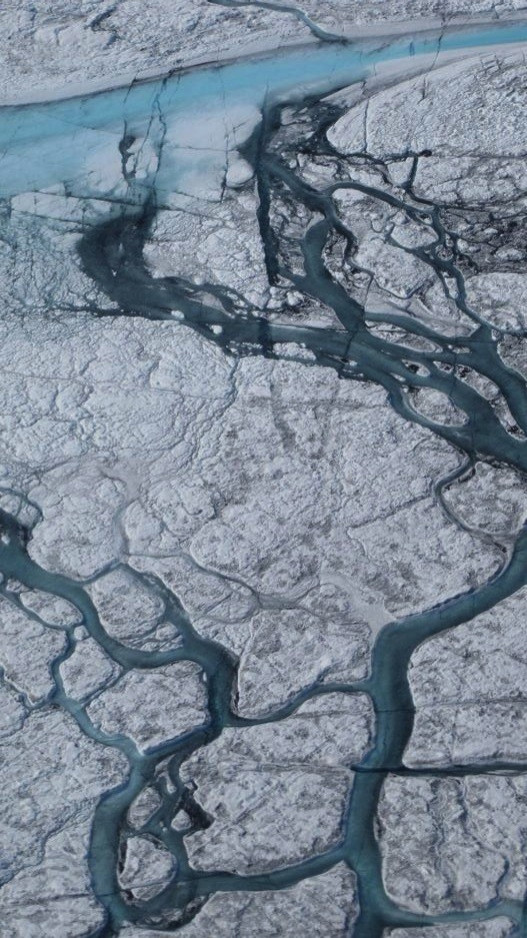2012 Greenland Melt Strongest On Record, And It's Not Over Yet

New data shows that melting of the vast ice sheet that covers more than three-quarters of Greenland is the strongest ever seen - and there are still four weeks to go in the melting season.
Marco Tedesco, a researcher at The City College of New York, says the melting that scientists have observed in 2012 has already outstripped the melt in 2010. The melting season typically lasts from June to early September.
"With more yet to come in August, this year's overall melting will fall way above the old records," Tedesco said in a statement Monday. "That's a goliath year - the greatest melt since satellite recording began in 1979."
This latest observation has not yet been published in a peer-reviewed journal, but Tedesco and his colleagues have a forthcoming paper looking at models projecting gains and losses to the ice sheet throughout the rest of this century.
NASA announced in July that its satellites had found that about 97 percent of the ice sheet's 660,000 square mile surface had undergone melting. This latest data from Tedesco and his colleagues jives with that finding. They used data from microwave satellite sensors in order to calculate the cumulative melting index, which gauges the 'strength' of the melting season. The index is generated by multiplying the number of days the ice sheet has melted by the total area of the ice sheet that has melted.
Tedesco said in a phone interview that the previous record set in 2010 came in a year in which melting began ahead of schedule. 2012 has matched the strength of melting while starting at the usual time frame.
Asa Rennermalm, a Rutgers University researcher unaffiliated with the current project, studies the streams and rivers both on the ice sheet and those that are fed by meltwater. She says the residents of Kangerlussauq, a town near her research site, say this season's melt is the biggest they remember.
Kangerlussauq, which is small but contains Greenland's major airport, was directly impacted by the higher melt on July 11, when a major bridge was destroyed by rising river fed by meltwater.
"It was pretty dramatic," Rennermalm said over the phone.
Tedesco's colleague Jason Box, a researcher at Ohio State University, says there's a positive feedback mechanism at play in the ice sheet's melting - as the surface melts, it gets darker, which absorbs more heat from the sun. Just like wearing a black T-shirt makes you feel hotter in midsummer than wearing a white T-shirt does, melted surfaces grab onto more heat and encourage even more melting.
In a blog post on Wednesday, Box wrote that the reflectiveness or "whiteness" of the Greenland ice sheet, also called albedo, was extraordinarily low on July 16 -- perhaps the lowest in 1,000 years.
"We can expect that even with a normal winter, next spring we're going to see an earlier melt happening because of how much solar radiation the ice sheet has absorbed," Box says.
While the cumulative melt for 2012 has already outstripped the cumulative melt in 2010, scientists are still investigating the role global warming plays in the increasingly slushy ice sheet.
"We have to be careful because we are only talking about a couple of years and the history of Greenland happened over millennia," Tedesco said in a statement. "But as far as we know now, the warming that we see in the Artic is responsible for triggering processes that enhance melting and for the feedback mechanisms that keep it going. Looking over the past few years, the exception has become part of the norm."
© Copyright IBTimes 2024. All rights reserved.





















